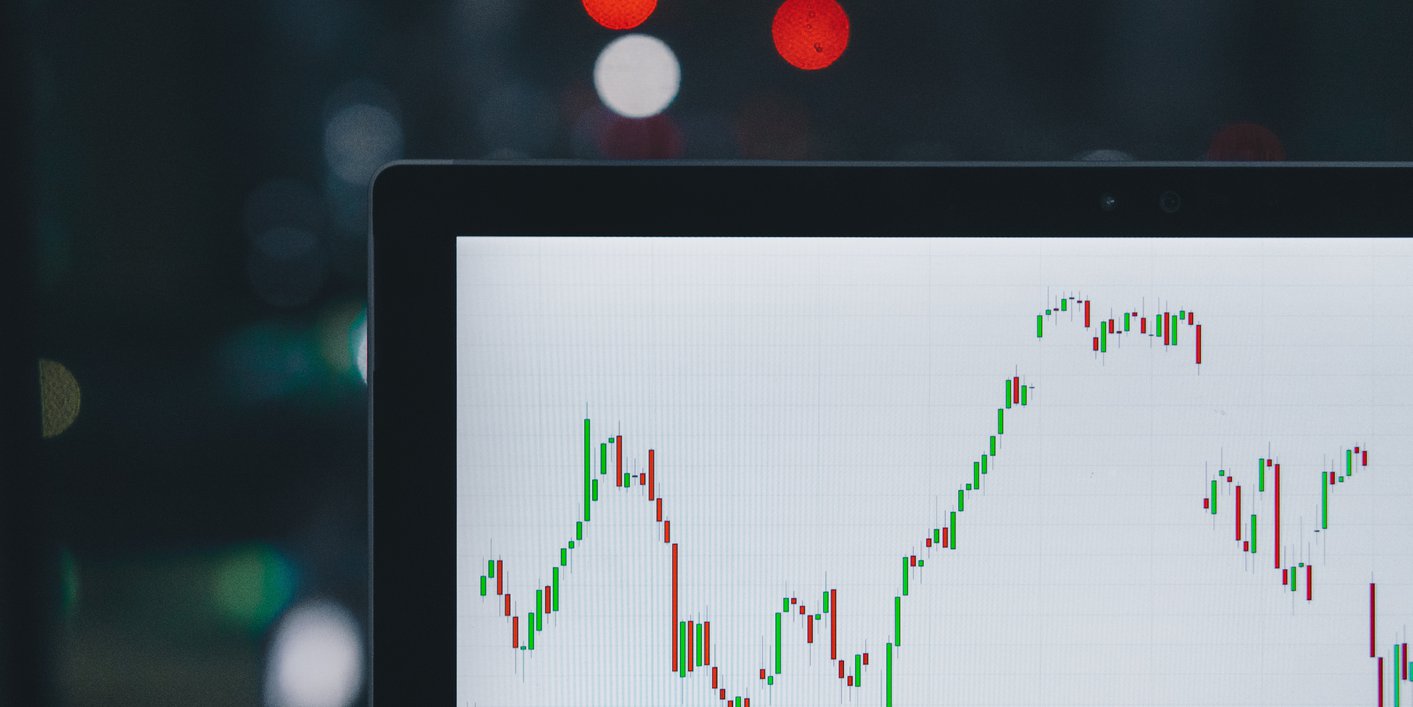Currently, no aspect of our lives has remained untouched by Artificial Intelligence (AI) and Machine Learning (ML). Artificial Intelligence refers to the intelligence demonstrated by machines. The machines mimic human cognition to accomplish tasks such as speech recognition, visual perception, and decision making. On the other hand, machine learning is the subfield of Artificial Intelligence in which we study computer algorithms that get trained and upgraded with experience. Machine learning algorithms employ an enormous amount of structured and unstructured data to make precise predictions based on that data.
In this article, we will discuss the applications of machine learning for trading. But before proceeding to discuss that, we will see what is trading and how it is different from investing. Trading is merely the act of buying, selling, or bartering of assets. Trading and investing are two distinct terms because a short-term strategy is utilized in trading to maximize returns either on a daily, weekly, monthly, or quarterly basis. Traders buy and sell stocks, bonds, commodities, or currency pairs. Conversely, investment is a long-term strategy, in which the investor tries to maximize the return on investment gradually over an extended period. As you can see that the fundamental difference between investing and trading is timing. Let us now proceed to discuss the applications of machine learning for trading.
Trading materializes in an overly competitive world because traders have constant pressure to make accurate decisions for maximizing their profits. With machine learning and artificial intelligence coming into the picture, old techniques of trading are becoming obsolete rapidly. Here is how machine learning is leveraged in the trading industry.
Machine Learning for Algorithmic Trading
Machine Learning algorithms are extremely helpful in optimizing the decision-making process of humans because they maneuver data and forecast the forthcoming market picture with terrific accuracy. Based on these predictions, the traders can take timely actions and maximize their returns. We know that trading is often influenced by human emotions, which is a great stumbling block in the way of optimal performance. Algorithms and computer programs make decisions quicker than humans and without the influence of external factors such as emotions.
The use of algorithms and computers for trading is commonplace in the trading industry. Using a pre-programmed computer system that follows a clear set of instructions to execute the trade is known as algorithmic trading. Algo trading or automated trading are other names given to algorithmic trading. Algorithmic trading is used for trading purposes since the late 1980s and 1990s. Some examples of algorithmic trading strategies are given below:
- Trade Execution Algorithms: They split the trades into smaller orders so that the impact on the stock price can be lessened. Commonly used trade execution algorithms are Volume Weighted Average Price (VWAP), Time Weighted Average Price (TWAP), and Percent of Value (PoV).
- Strategy Implementation Algorithms: They execute trades based on signals they receive from real-time market data.
- Stealth/Gaming Algorithms: Large trades or other algorithmic strategies cause price movements that are exploited by stealth or gaming algorithms.
- Arbitrage Opportunities: The example of this strategy includes a situation in which the same stock ends up trading in two different markets at different prices. In this situation, this strategy involves selling higher-priced stocks and buying lower-priced ones.
When algorithmic trading was first introduced in the market, it immediately captured the attention of the traders because of its profitability. However, as the competition heightened, the profitability declined significantly. The traditional algorithms, created by programmers and data scientists, depend on “if and then” rules and are unable to upgrade themselves by learning through historical data. Now, the capital market firms are using machine learning to build algorithms that do not depend on rule-based systems. The algorithms that are powered by machine learning learn new trade patterns automatically without requiring human intervention.
High-frequency Trading
High-Frequency Trading refers to complicated algorithmic trading which involves the execution of a large order within a fraction of a second. To execute numerous orders in this short time- period is beyond the capacity of humans. Traders use algorithms and computers for automated execution of orders because it requires significant time to read the market trend and place bids manually.
Task automation with AI is embraced by every industry. In high-frequency trading, many machine learning algorithms and feature creation methodologies are applied. The most common example is the application of SVMs. SVM works by creating a line of separation in the data. It involves training the models so that they can identify features that reflect an approaching increase or decrease in the bid and market pricing.
Machine learning to find patterns in the data
One of the major tasks of machine learning algorithms is to employ massive historical data and accurately predict the future picture. Fortunately, this task of machine learning correlates with the fundamental aspect of trading. The traders usually discover time and space limited localized patterns and think about how to maneuver these patterns for greater return. These patterns are ever-changing and the process of identifying these patterns entails a great deal of time and energy. Machine learning algorithms help in finding the patterns that can be combined with the intuition and experience of traders for accurate decisions.

The limitation of using machine learning for finding patterns is that many traders in the same market employ it for the same purpose. In other words, there is a lot of competition in the market and the patterns identified by one trader are also at the disposal of other traders in the market. Therefore, even if a trader is utilizing machine learning to find patterns, he may have to act fast or adapt continuously, because the patterns vanish immediately due to the intense competition.
Machine Learning for Sentiment Analysis

Numerous factors affect the stock market including sentiments of people. Sentiments play a crucial role in stock market movements because the market trends change rapidly with the sentiments of people. Hence, companies are now using machine learning and artificial intelligence to analyze the sentiments of people and predict the prices of stocks based on those sentiments. Social media is a potent tool for sentiment analysis because people express their views about anything on social media platforms freely. The sentiment analysis is carried out by leveraging Natural Language Processing (NLP) to categorize the sentiments of people about the stock value of a company into three categories such as negative, positive, and neutral. NLP is a subfield in machine learning that enables the computers to comprehend and analyze human language.
If there is an optimistic feeling about the company among people, its stock price is likely to go up. Conversely, a pessimistic sentiment in the people will cause a decline in the stock price. Machine learning algorithms can process social media content such as tweets, posts, and comments of people who generally have stakes in the stock market. This data is then used to train an AI model so that it can forecast the stock prices in different scenarios.
Predicting Real-world Data and Assessing Risks
Traders might be interested in forecasting the future value of stocks. Computer programs powered by machine learning and artificial intelligence can help them to certify the accuracy of their predictions. To find the predicted value of the stocks, machine learning accounts for multiple factors. Besides this, machine learning leverages neural networks to detect and analyze the factors also known as predictors, that cause the fluctuations in the stock prices.
Accurately assessing risks is crucial to be successful in trading. Machine learning algorithms can process volumes of data to assess the risks and forecast future changes in the market. Traders can leverage these insights for taking proactive actions to mitigate the impacts of the risks.
Use of Chatbots in Trading
Machine learning and Artificial Intelligence are revolutionizing the trading process by introducing numerous useful applications, for instance, chatbots. Chatbots communicate with the traders and present them with a history of financial statements and other useful information. For example, a trader can ask the chatbot about the trading offers. The chatbots will not only update him about the current prices but will also provide the information about potential offers by considering the responses of other traders.
Chatbots give brokers valuable information such as real-time quotes, account statements, FAQs (Frequently Answered Questions), and notifications about the steep price movements. These chatbots when powered with machine learning algorithms perform much better than humans. The best thing about chatbots is that they can process and learn from all the past conversations and upgrade themselves accordingly.
Using robo advisors for Automated Advisory
The deployment of robo advisors is gaining momentum in every industry. In the trading domain, investors can leverage robo advisors to create an adaptable portfolio of investments and execute the trade in the different markets of the world. Robo advisors can help in creating adaptable portfolios because they are automated computer programs with algorithms working at the back end. These algorithms enable the trader or investor to make accurate decisions in different circumstances. Robo advisors warrant that your decisions are based on real-time data. They are fed by information such as financial objectives, timeframe, and risk tolerances and analyze this information by using many algorithms including machine learning models to give the best advice to the customer. Since they are fully automated, hence they also take the necessary actions, for instance rebalancing the portfolio of the customer. Their action-oriented capabilities combined with decision-making powers enhance their efficiency in the trading sector.
They are also useful in providing financial advisory services because a person who wishes to enter the trading domain will need a helping hand. The cost of consulting a financial advisor is higher than engaging with the robo advisor. The consultation fee of financial advisors increases with their experience. Besides being cost-effective, robo advisors also save time because they are fully automated. They manage the portfolios in the smallest time frame and ensure that trades are executed as early as possible.
Examples of Companies Using Machine Learning for Trading
Several large enterprises are utilizing the powers of machine learning to maximize their profits. Some of the examples are given below:
- Morgan Stanley: Headquartered in New York, Morgan Stanley is a multinational investment bank and financial services company that leverages robo advisors powered by machine learning to assist investors in managing their wealth. The machine learning algorithms help investors to make better and informed decisions based on real-time data.
- Numerai: It is an AI-powered hedge fund located in San Francisco. It uses machine learning algorithms to drive open-source Numerai trades.
- Tino IQ: Based in Campbell Calif, Tino IQ uses machine learning algorithms to scan the stocks across the markets. These algorithms identify patterns in the stocks and based on these patterns, the stocks are listed in the Tino IQ app with a buy and sell recommendations.
- Kavout: It is an investment platform that combines the powers of machine learning and big data to give valuable insights about stock trading. Stock traders can look at the “K scores” that range from 1 to 9 and are updated regularly, to make their buying and selling decisions.
- Wealthfront: It is an automated financial advisor application. It uses machine learning to give financial advisers to investors at a relatively low cost.
So far, we have discussed the applications of machine learning in the trading context. Machine learning has revolutionized the trading domain by automating the tasks which previously were not possible without human intervention. Lagging in the adoption of these tools pose a significant threat for the traders and investment companies. Large investment companies are rapidly embracing machine learning algorithms for trading and setting an example for other smaller firms.
By using machine learning algorithms for trading, we can identify the patterns in the market, assess the investment risks, and analyze the sentiments of the people. Moreover, automated chatbots services and robo advisors powered with machine learning algorithms have made the decision-making process a lot easier and faster. The robo advisors have not only helped to automate the mundane tasks but also reduced the costs associated with financial advisory significantly. Hence, the companies need to upgrade themselves by embracing new machine learning and artificial intelligence tools because it is evident that the applications of these technologies in trading will continue to prosper in the future.



